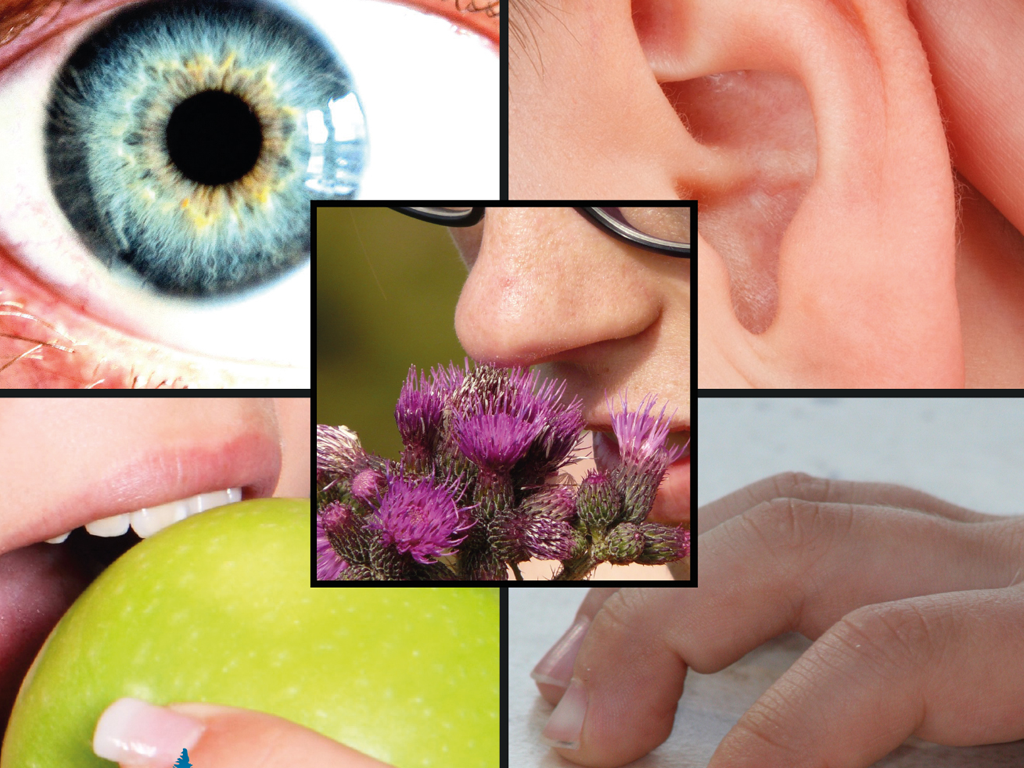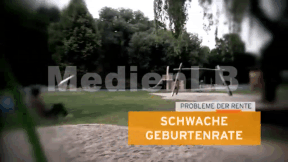 Biology
Biology

4670854 / 5560960
Die 5 Sinne
Wahrnehmung des Menschen
Wie selbstverständlich sehen, hören, riechen, schmecken und fühlen wir. Jeder benutzt täglich seine fünf Sinne, ohne sie bewusst einzusetzen. “Schau dich schlau!” untersucht in dieser Sendung, warum sie für uns überlebenswichtig sind und wie sie funktionieren.
Fero Anderson trifft sich mit einem blinden Menschen, der ihm seine persönliche Geschichte erzählt. Es wird dabei klar, was der Verlust des Augenlichts für einen Menschen bedeutet und wie er zugleich die anderen Sinne wie etwa das Hören und Fühlen schärft. Manche Menschen können zum Beispiel ihre Umgebung durch Echo-Ortung “sehen”, das heißt sie nehmen ihre Umgebung aufgrund von Schallwellen wahr. Joey Grit Winkler erklärt, wie Sehen funktioniert, und testet in einer Fußgängerzone, wie gut oder schlecht die Deutschen sehen.
“Schau dich schlau!” kommt auf den Geschmack und zeigt, auf welchen Zungenbereichen man welche Geschmacksrichtungen (süß, sauer, bitter oder salzig) schmeckt und warum das so ist. Ob Saucen, Gewürztüten, Chips oder Fertigessen – überall sind Geschmacksverstärker drin. Fero und Joey zeigen, wie man Geschmacksverstärker erkennt, wo man sie überall findet und klären, was sich hinter ihren Bezeichnungen wie E426 oder E511 verbirgt.
Viele Brillenträger stellen sich zuweilen die Frage: Augenlasern – ist das gefährlich oder nicht? “Schau dich schlau!” geht der Sache auf den Grund und begleitet eine Augen-OP. Ein Augenarzt erklärt, wie der Eingriff funktioniert, unter welchen Voraussetzungen die Fehlsichtigkeit korrigiert werden kann, und welche Alternativen es zu Lasern gibt.
Außerdem: Woher kommt die Redewendung “Jemanden riechen können”? Welche Geräusche nehmen wir nicht wahr, weil unser Gehirn sie ausblendet? Und wann sollte man auf seinen “sechsten Sinn” hören und seinem Bauchgefühl vertrauen?

Curriculum-centred and oriented towards educational standards
Matching
Altersarmut
Innerhalb von 52 Jahren hat sich in der Bundesrepublik das Verhältnis von Beitragszahlern für die Rente zu den bestehenden Rentnern um den Faktor 3 verschlechtert. Sind 1962 noch 6 Erwerbstätige für die Rentenzahlung eines Rentners aufkommen, so mussten 2014 zwei Erwerbstätige für die Rentenzahlung von einem Rentner aufkommen. Die Altersarmut in Deutschland steigt. Denn nur wer 40 Jahre ohne Unterbrechung mindestens 2.100 € verdient hat, bekommt als Rente mehr als den Hartz-IV-Satz ausgezahlt. Beschäftige im Niedriglohnsektor oder in Teilzeit können selbst nach 45 Jahren Arbeit nicht von ihrer Rente leben. Vielen Rentnern bleibt nur der entwürdigende Weg zum Arbeitsamt.
Gedenk- und Feiertage
Feiertage gibt es in allen Kulturen. Es sind Festtage mit entweder gesellschaftlichem, religiösem oder politischen Hintergrund. Diese Feiertage finden jährlich an einem festgelegten Tag statt. In Deutschland gibt es Feiertage, an denen flächendeckend nicht gearbeitet wird. Hierbei handelt es sich um gesetzliche Feiertage. Bei anderen Feiertagen, meist mit religiösem Hintergrund, entscheiden die Bundesländer individuell, ob es sich um einen tatsächlich arbeitsfreien Tag handelt. Im Film beschrieben werden nicht nur Feiertage in Deutschland, sondern auch z.B. islamische Feiertage, oder der Christopher Street Day als politisches Statement.









